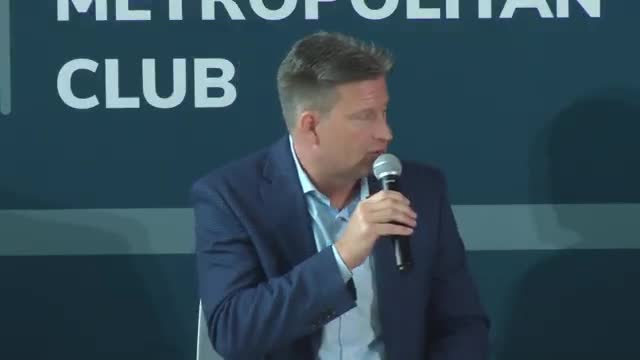Farm practices tied to H2Ohio credited with early cuts in phosphorus runoff
October 15, 2025 | Columbus City Council, Columbus, Franklin County, Ohio
This article was created by AI summarizing key points discussed. AI makes mistakes, so for full details and context, please refer to the video of the full meeting. Please report any errors so we can fix them. Report an error »

Panelists at a Columbus Metropolitan Club forum described how on-farm practices funded through the H2Ohio agricultural component have reduced phosphorus losses and lowered fertilizer use.
"Just in 4 growing seasons, we've already seen a 10% reduction," Adam Sharp, executive vice president of the Ohio Farm Bureau Federation, said of dissolved reactive phosphorus (DRP) moving toward Lake Erie. Sharp said that during some spring flows the state has recorded as much as a "30 to 40% reduction in DRP coming down the Maumee River." He added: "We've seen a 33% reduction in the amount of fertilizer being applied."
Sharp credited the reductions to a mix of cost-share programs and precision practices, including more frequent soil testing, grid sampling, and variable-rate application technology that changes nutrient rates across a field. He said H2Ohio funds are predominantly cost-share, requiring farmer investment as well.
Paula Powell, senior vice president of research and development at Scotts Miracle-Gro, described private-sector stewardship on consumer products and education. "Back in I believe it was 2011, Scott's made the decision to remove phosphorus from all of our lawn maintenance fertilizers," Powell said, and she emphasized consumer education and product stewardship to reduce residential runoff.
Panelists said economics also drive adoption: fertilizer (phosphorus inputs) has risen sharply in price, which encourages efficient application. Sharp noted that phosphorus fertilizer prices have "tripled in price in the last 5 years," increasing the financial incentive to use precision practices.
Speakers stressed that observed reductions are early but measurable, and that continuing cost-share support and data collection are needed to sustain progress and to reach the state’s 40% phosphorus-reduction goal.
"Just in 4 growing seasons, we've already seen a 10% reduction," Adam Sharp, executive vice president of the Ohio Farm Bureau Federation, said of dissolved reactive phosphorus (DRP) moving toward Lake Erie. Sharp said that during some spring flows the state has recorded as much as a "30 to 40% reduction in DRP coming down the Maumee River." He added: "We've seen a 33% reduction in the amount of fertilizer being applied."
Sharp credited the reductions to a mix of cost-share programs and precision practices, including more frequent soil testing, grid sampling, and variable-rate application technology that changes nutrient rates across a field. He said H2Ohio funds are predominantly cost-share, requiring farmer investment as well.
Paula Powell, senior vice president of research and development at Scotts Miracle-Gro, described private-sector stewardship on consumer products and education. "Back in I believe it was 2011, Scott's made the decision to remove phosphorus from all of our lawn maintenance fertilizers," Powell said, and she emphasized consumer education and product stewardship to reduce residential runoff.
Panelists said economics also drive adoption: fertilizer (phosphorus inputs) has risen sharply in price, which encourages efficient application. Sharp noted that phosphorus fertilizer prices have "tripled in price in the last 5 years," increasing the financial incentive to use precision practices.
Speakers stressed that observed reductions are early but measurable, and that continuing cost-share support and data collection are needed to sustain progress and to reach the state’s 40% phosphorus-reduction goal.
View full meeting
This article is based on a recent meeting—watch the full video and explore the complete transcript for deeper insights into the discussion.
View full meeting
